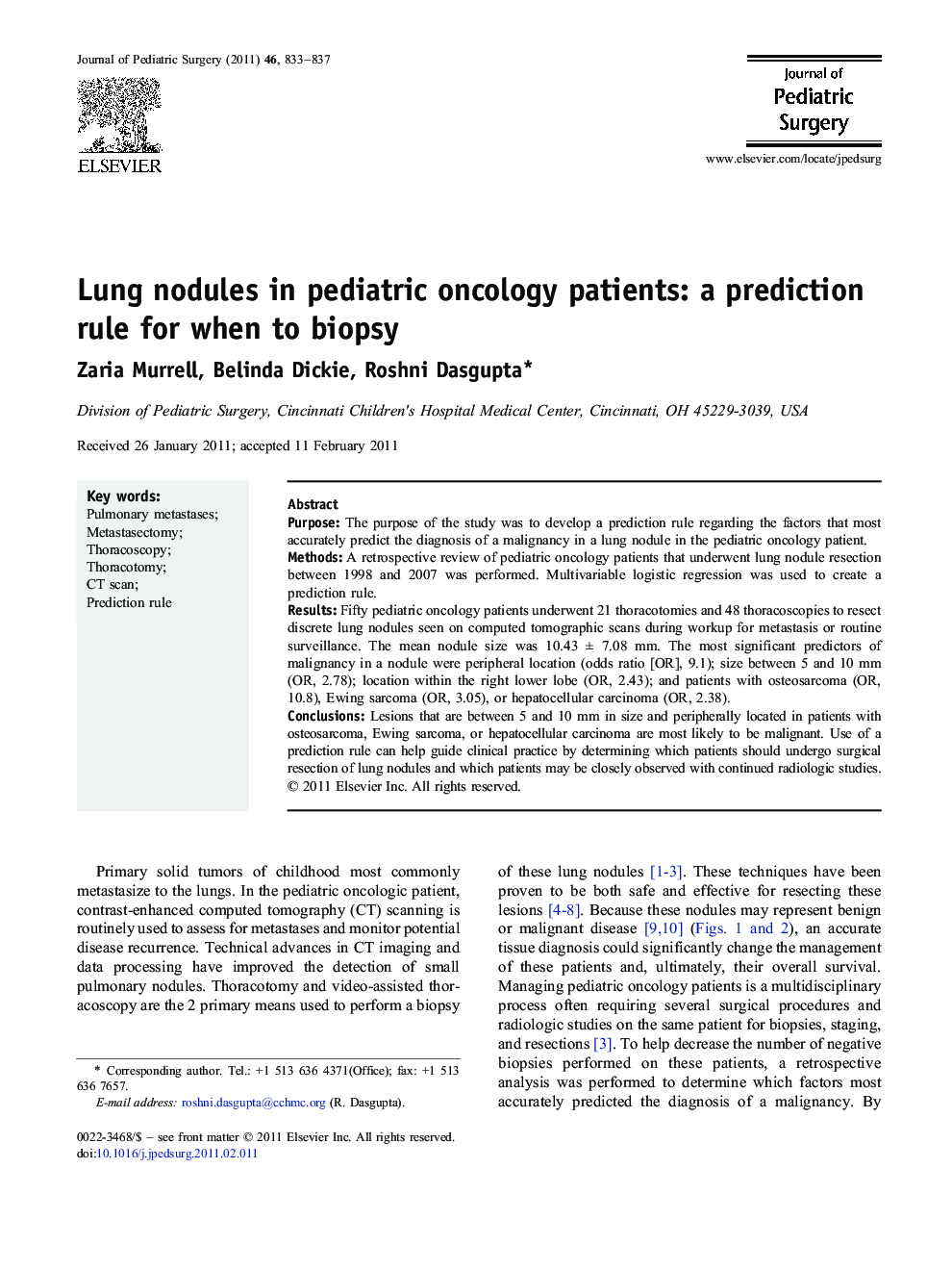| Article ID | Journal | Published Year | Pages | File Type |
|---|---|---|---|---|
| 6217907 | Journal of Pediatric Surgery | 2011 | 5 Pages |
PurposeThe purpose of the study was to develop a prediction rule regarding the factors that most accurately predict the diagnosis of a malignancy in a lung nodule in the pediatric oncology patient.MethodsA retrospective review of pediatric oncology patients that underwent lung nodule resection between 1998 and 2007 was performed. Multivariable logistic regression was used to create a prediction rule.ResultsFifty pediatric oncology patients underwent 21 thoracotomies and 48 thoracoscopies to resect discrete lung nodules seen on computed tomographic scans during workup for metastasis or routine surveillance. The mean nodule size was 10.43 ± 7.08 mm. The most significant predictors of malignancy in a nodule were peripheral location (odds ratio [OR], 9.1); size between 5 and 10 mm (OR, 2.78); location within the right lower lobe (OR, 2.43); and patients with osteosarcoma (OR, 10.8), Ewing sarcoma (OR, 3.05), or hepatocellular carcinoma (OR, 2.38).ConclusionsLesions that are between 5 and 10 mm in size and peripherally located in patients with osteosarcoma, Ewing sarcoma, or hepatocellular carcinoma are most likely to be malignant. Use of a prediction rule can help guide clinical practice by determining which patients should undergo surgical resection of lung nodules and which patients may be closely observed with continued radiologic studies.
